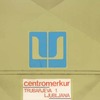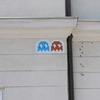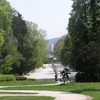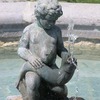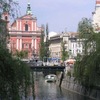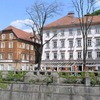Slovenia claims Lipizzaner as its own
Slovenia's 20-cent euro coin...
Slovenia is using its adoption of the euro currency on 1st January 2007 as a chance to press its claim as the true home of the famous Lipizzaner horse.
The country has chosen the dancing horse to adorn its 20-cent coins - and to loosen the link in European minds between Lipizzaners and Austria.
Austria lets the horses of the famed Spanish Riding School share the Hofburg Palace with government ministers.
It had a Lipizzaner on five-schilling coins, but dropped them from its euros.
Both countries tend to think of the animal with its 400-year history, as part of their national identity.
An Austrian government spokesman said it was up to Slovenia what image to put on its euro coins, and that Austria had no grounds to intervene.
"There were talks with Slovenia on that topic, but it is not a reason to interfere in good, friendly bilateral relations with Slovenia," he said.
A tug of love over the horse and its heritage strained relations between the two countries in the late 1990s, as Slovenia was preparing for EU membership.
Austria had just done a deal with Italy to become official keeper of the central stud book of origin of the Lipizzaner breed.
But Slovenia, with the original village of Lipica (in Italian, Lipizza) on its territory, refused to accept a fait accompli.
First it tried to register the Lipizzaner name at the World Trade Organization, then it tried moral persuasion to get Austria to back down.
Just last year, as the Lipica stud farm celebrated its 425th anniversary, Slovenian Culture Minister Vasko Siminiti declared: "We have now decided to do everything on the EU level to return the book of origin for the Lipizzaner horse."
Slovenia accepts that the animal is part of the common cultural heritage of the territories that were once part of the Austro-Hungarian empire.
The horses hop, jump and pirouette to classical music
Between World Wars I and II Lipica/Lipizza was part of Italy. After World War II it became part of Yugoslavia, then, in 1991, of independent Slovenia.
The Lipica herd was taken by the Germans from Italy in World War II, then "liberated" by US General George Patton - an Olympic horseman - who sent an armoured brigade behind the front line to pluck it from under the nose of the advancing Soviet army.
Atjan Hop, Secretary General of the Lipizzan International Federation, based in the Netherlands, disapproves of countries claiming a "unique right on the inheritance of the breed" but regards the Slovenian euro coin as a good advertisement for Lipizzaners.
However, he describes it as strange that while Slovenia is expressing its commitment to the horse on its euro coins, it is also planning to privatise the Lipica stud farm, exposing its cultural inheritance to the vagaries of the market.
 Airtrail Slovenia
Airtrail Slovenia
